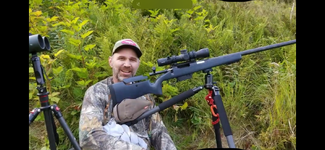This a .223 with 75gr. BTHP
View attachment 806741
And a 300 PRC with 225 ELDM
View attachment 806747
I’m not sure of the impact velocities, but Hornady’s website has lot of good calibrated gel testing. Very cool to look at.
“Ten bullets through one hole,” was the philosophy of J.W. Hornady, the company’s founder. This great idea of accuracy and perfection has continued from the first bullet made more than half a century ago, right through today.

www.hornadyle.com
Click on the actual bullet name that you’re interested in, and it’ll bring you to a new page. Scroll down and you’ll see “ballistics” and “gelatin”. Select gelatin to see all the testing for that bullet.


